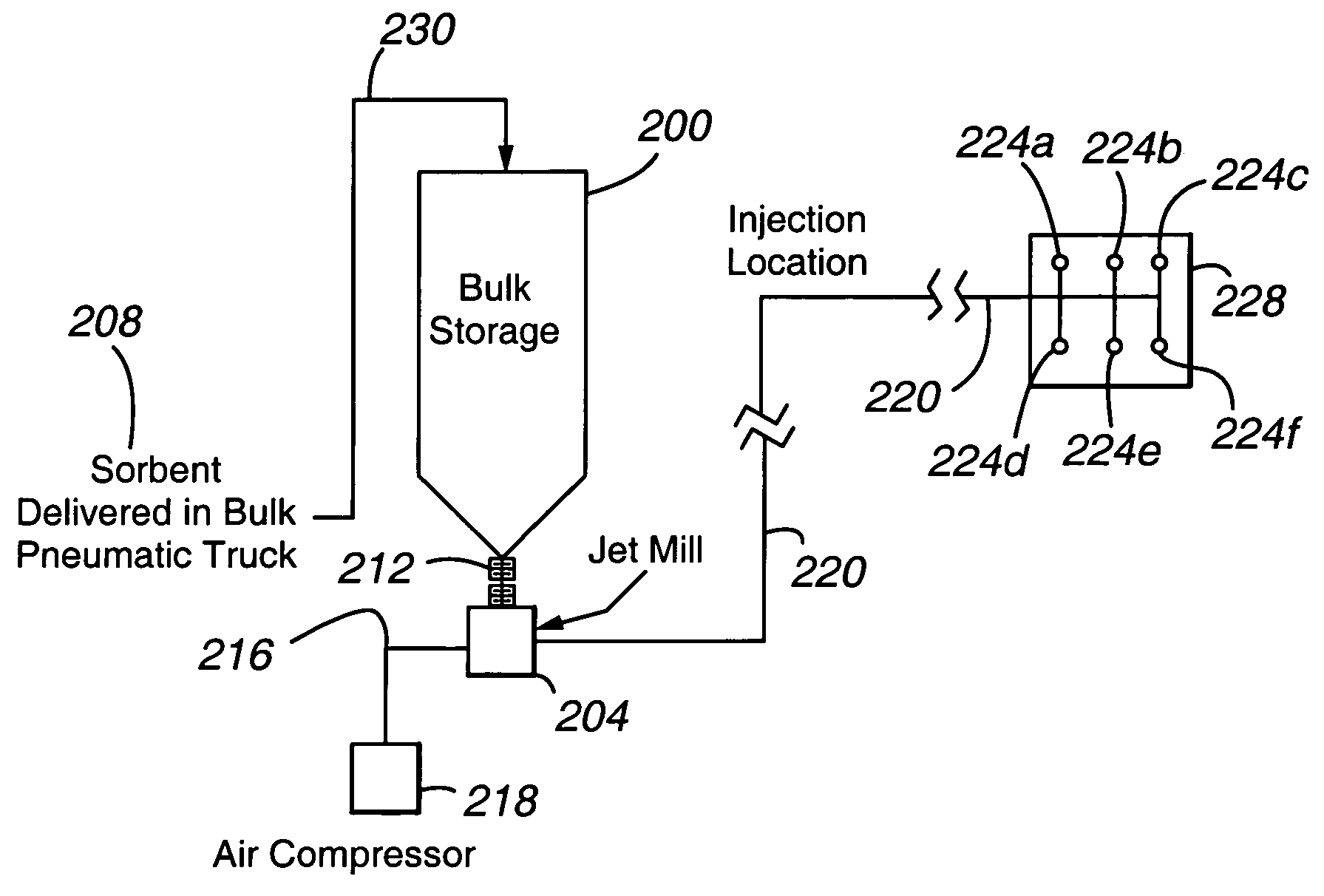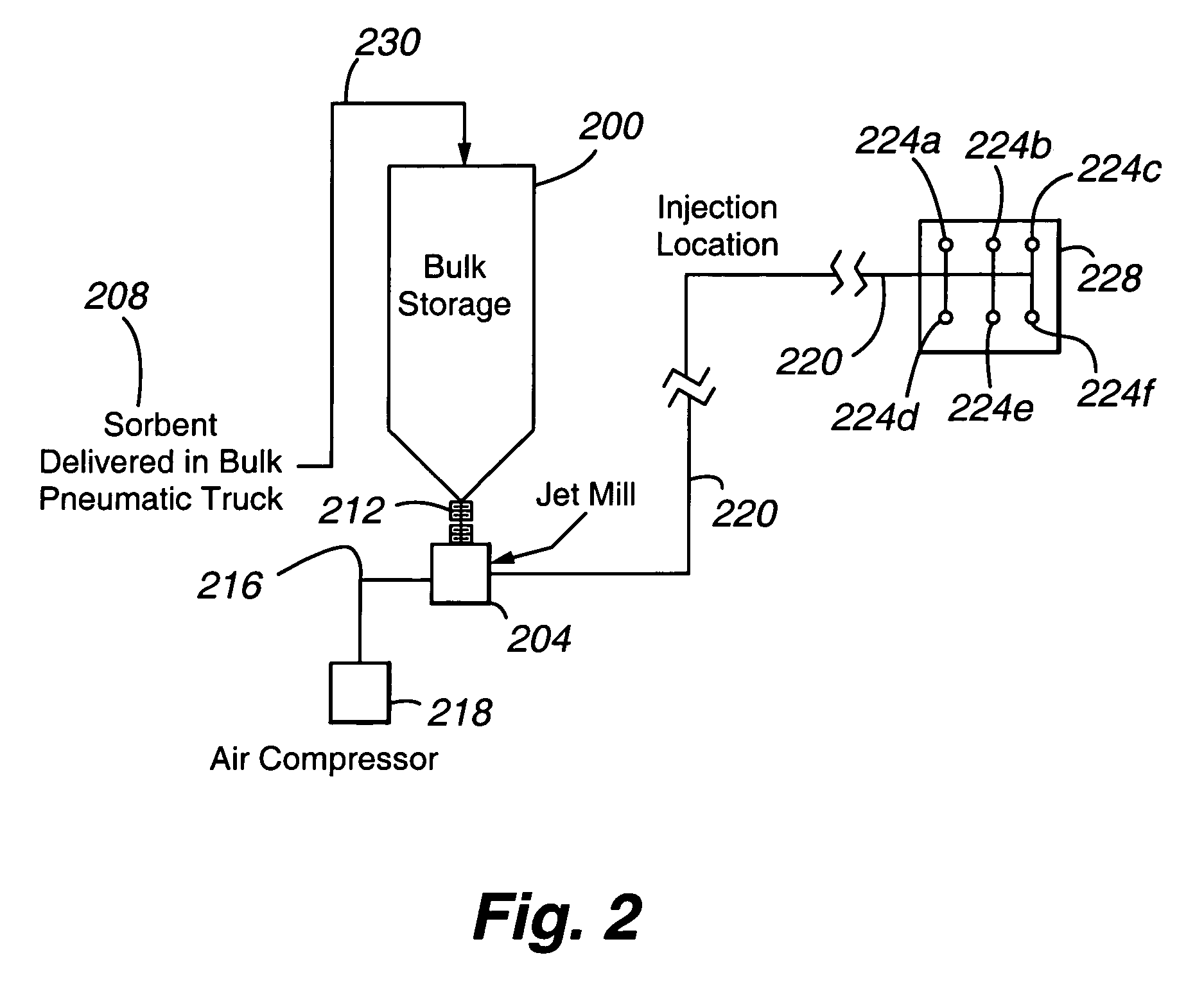Apparatus and process for preparing sorbents for mercury control at the point of use
- Summary
- Abstract
- Description
- Claims
- Application Information
AI Technical Summary
Benefits of technology
Problems solved by technology
Method used
Image
Examples
example 1
[0043]The following Example describes improved mercury control in flue gas achieved with finely ground sorbent particles.
[0044]This Example was carried out on the flue gas from an operating coal-fired power plant. A number of carbon sorbents, including DARCO FGD manufactured by Norit Americas (Marshall, Tex.) with a mass mean particle diameter of approximately 18 micrometers, was compared to DARCO INSUL, also manufactured by Norit Americas, with a mass mean particle diameter of approximately 6 micrometers, was injected into the flue gas, downstream of (i.e., after) an electrostatic precipitator (ESP), and upstream of a baghouse (fabric filter.) Flue gas temperature was approximately 300 degrees F. Mercury concentration was measured by a Semi-Continuous Emissions Monitor (S-CEM), in the following locations: upstream of the ESP and downstream of both the sorbent injection site and the baghouse.
[0045]FIG. 4 shows the results. The X-axis depicts the amount of carbon injected into the fl...
PUM
| Property | Measurement | Unit |
|---|---|---|
| Time | aaaaa | aaaaa |
| Size distribution | aaaaa | aaaaa |
| Size | aaaaa | aaaaa |
Abstract
Description
Claims
Application Information
 Login to View More
Login to View More - R&D
- Intellectual Property
- Life Sciences
- Materials
- Tech Scout
- Unparalleled Data Quality
- Higher Quality Content
- 60% Fewer Hallucinations
Browse by: Latest US Patents, China's latest patents, Technical Efficacy Thesaurus, Application Domain, Technology Topic, Popular Technical Reports.
© 2025 PatSnap. All rights reserved.Legal|Privacy policy|Modern Slavery Act Transparency Statement|Sitemap|About US| Contact US: help@patsnap.com



